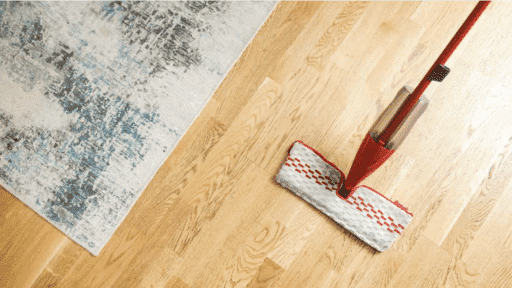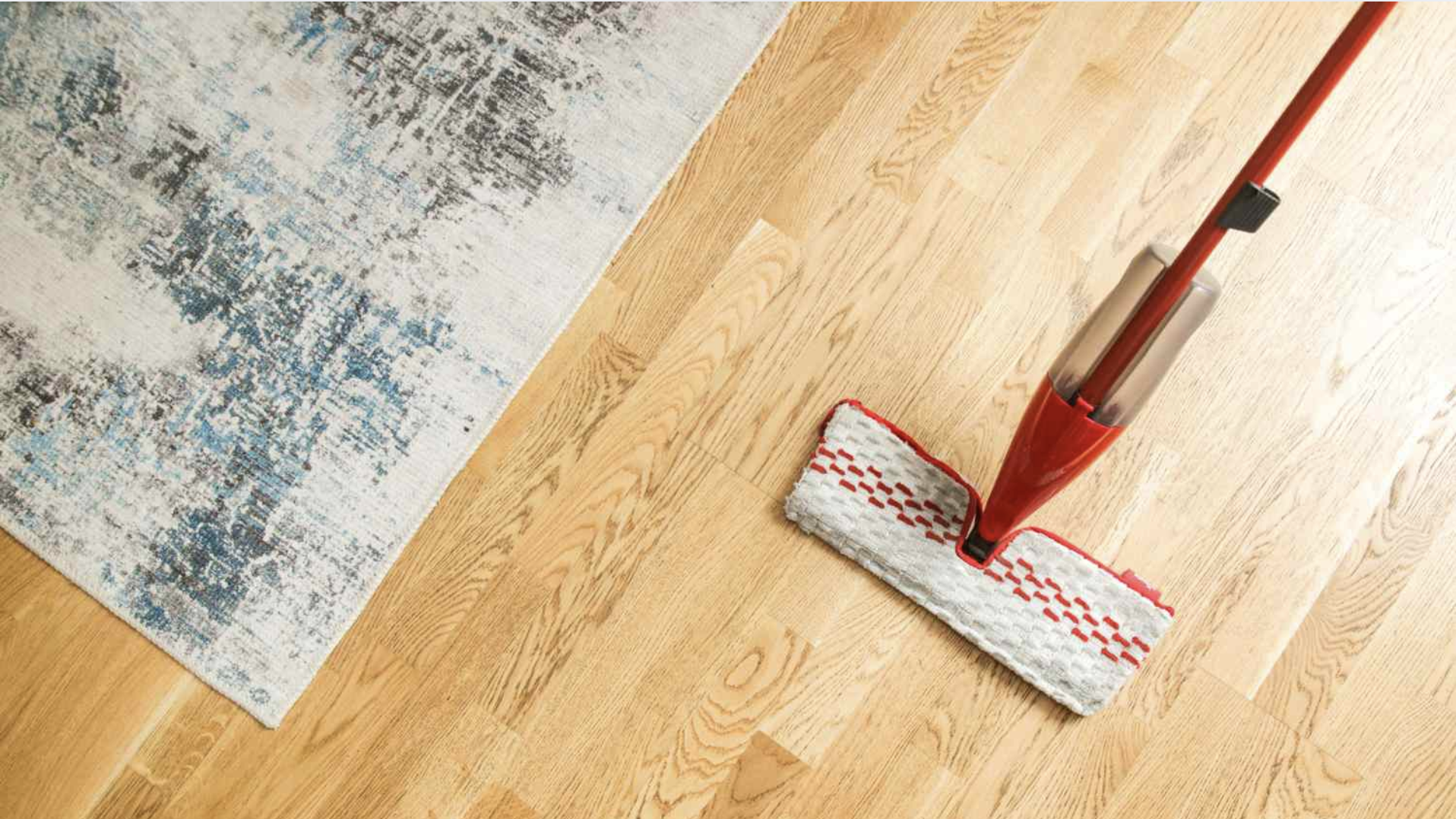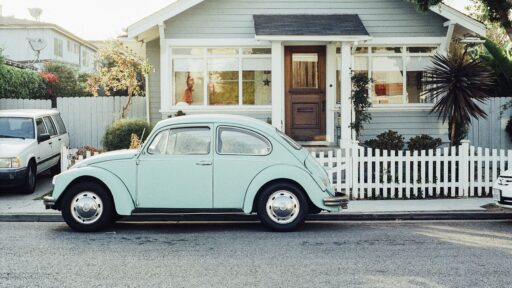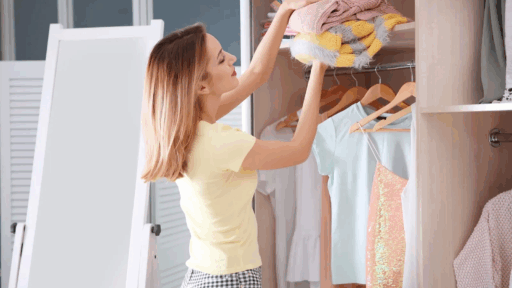Hardwood floors add warmth and value to your home, but they need proper care to stay beautiful.
Cleaning them the right way helps protect the finish, prevent scratches, and extend their life.
On the other hand, using too much water, the wrong cleaners, or harsh tools can lead to dullness, warping, or even permanent damage.
It’s not just about keeping things tidy, it’s about preserving what you’ve invested in. I’ve seen floors warp, fade, or lose their shine just from well-meaning mistakes.
In this guide, I’ll walk you through safe and simple cleaning methods that actually work.
You’ll learn what tools to use, which products to skip, and how to keep your floors looking their best day after day.
Let’s make your hardwood floors shine without the guesswork.
How Often Should You Clean Hardwood Floors?
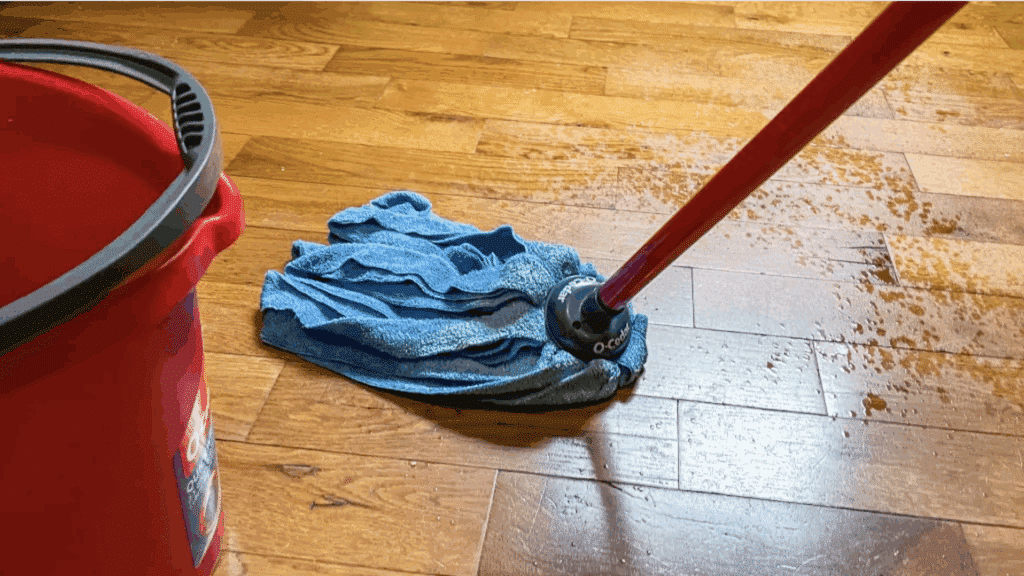
Taking care of hardwood floors doesn’t have to be a chore, but having a simple routine makes a big difference. This is what work has been over the years:
| Frequency | What to Do | Why It Matters |
|---|---|---|
| Daily | Sweep with a soft broom or dry microfiber mop | Removes dirt and grit that can scratch the floor surface |
| Weekly | Vacuum with a hardwood-safe attachment, then damp mop with pH-neutral wood floor cleaner | Reaches corners and freshens up the surface without damaging the finish |
| Monthly | Use a stronger (yet safe) cleaner for a deeper clean | Removes buildup and keeps floors looking fresh |
| Seasonally | Check for dull spots, scratches, or wear; apply polish or call a pro if needed | Adds long-term protection and keeps floors in top shape throughout the year |
Tools and Materials Needed
Before you get started, it helps to have the right tools on hand. These are simple items, but they make a big difference when it comes to protecting your floors:
- Soft-bristle broom or dust mop
- Microfiber mop
- Vacuum with hardwood-safe setting
- pH-neutral hardwood floor cleaner
- Spray bottle (optional)
- Distilled water
- Soft towels or cloths
- Furniture pads (for prevention)
Step-by-Step Guide to Hardwood Floor Care
Sticking to a regular cleaning routine helps your hardwood floors stay clean without causing wear. This is how to usually tackle it:
Step 1: Sweep or Dry Dust

Start by sweeping your hardwood floors with a soft-bristle broom or a dry microfiber mop.
Fine dust, dirt, pet hair, and small gritty particles often settle on the floor’s surface, and if left there, they can grind into the finish over time and cause scratches.
Sweeping daily or every other day prevents buildup and keeps your floors looking polished. Make sure to get under furniture and along baseboards, where debris tends to gather.
Microfiber mops are especially effective because they attract and trap dust without pushing it around.
Step 2: Vacuum Gently
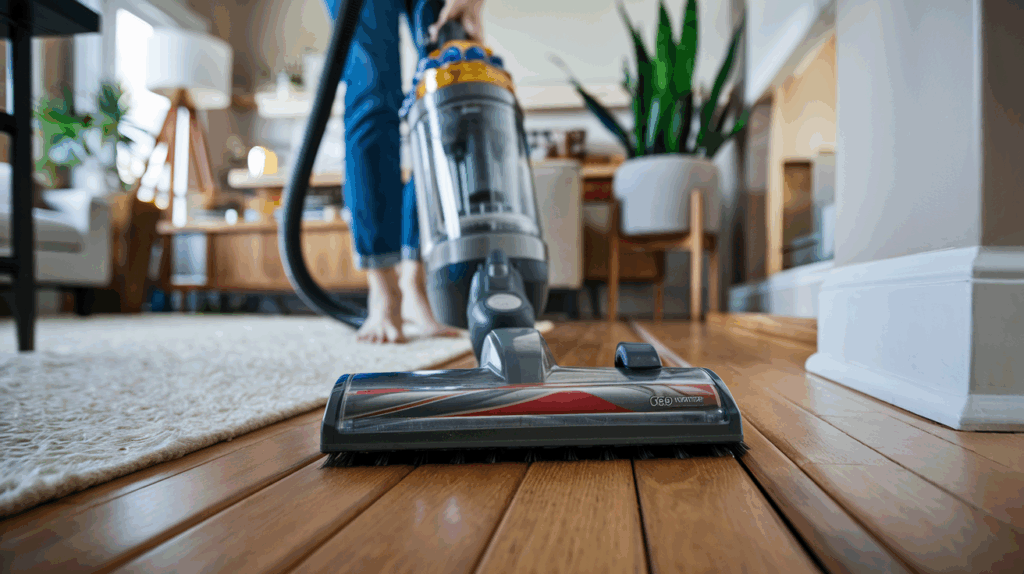
Vacuuming picks up the debris that sweeping can miss, especially in tight corners, between floorboards, and under furniture.
Use a vacuum with a hardwood-safe setting or a soft brush attachment. Avoid vacuums with rotating beat bars or stiff bristles, as these can scuff or damage the finish.
Take your time and vacuum in the direction of the wood grain for a smoother pass. Be extra thorough around doorways and in high-traffic areas where grit tends to build up.
Step 3: Damp Mop Properly
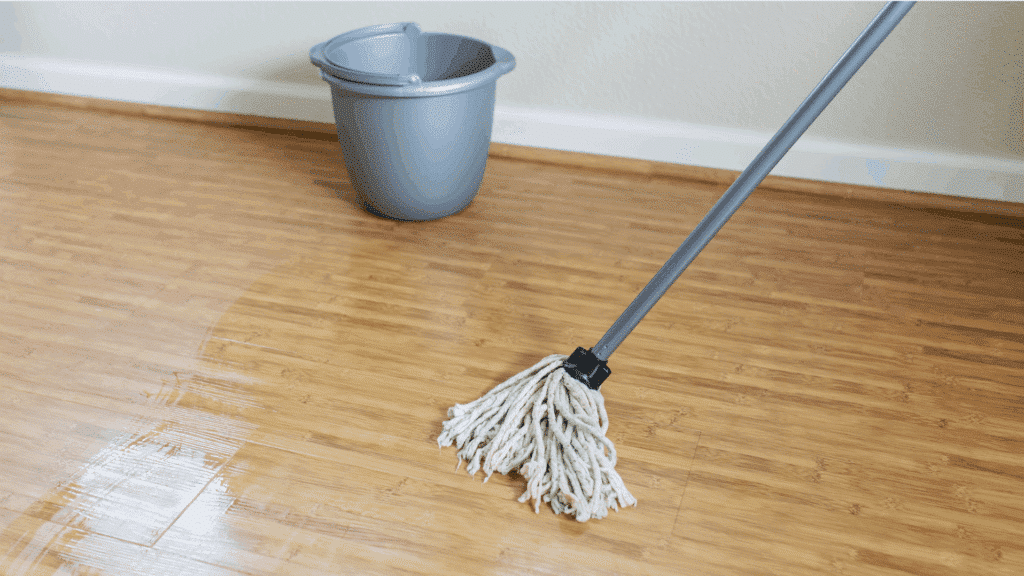
Once your floor is dust-free, it’s time for a gentle mop. Fill a spray bottle with pH-neutral hardwood floor cleaner or a diluted solution made for your specific flooring type.
Lightly mist a small section of the floor, or dampen your microfiber mop with the cleaner – just be careful not to over-wet it. Hardwood doesn’t like standing water, so always wring your mop out thoroughly.
Work in small sections and dry as you go with a soft towel if needed. This method lifts light grime and refreshes the surface without soaking the wood, keeping your finish intact and your floor protected.
Solid Hardwood vs. Engineered Hardwood
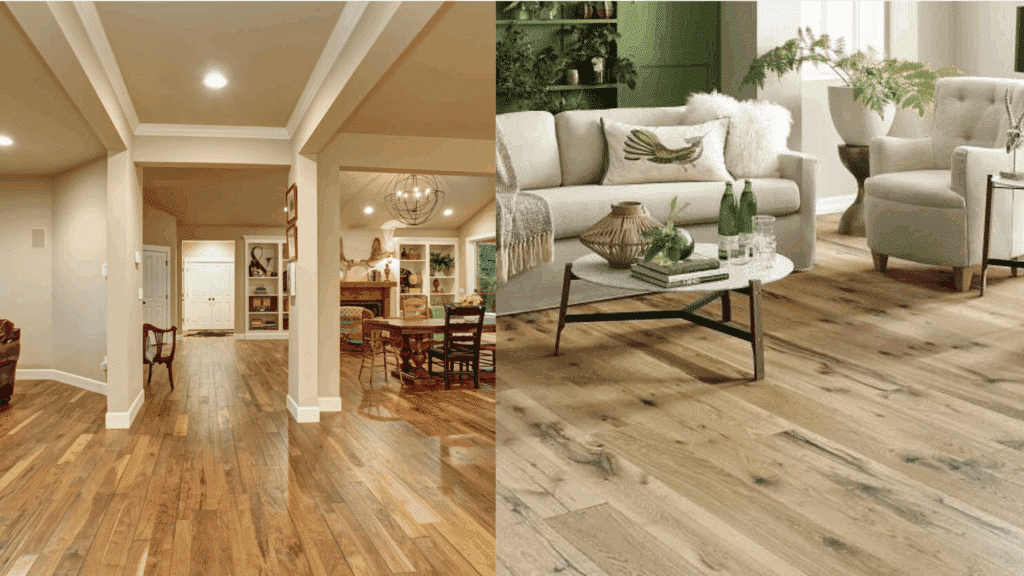
Not all hardwood floors are the same. Knowing your type helps you clean them the right way. This is a comparison in table format that clearly shows the differences:
| Feature | Solid Hardwood | Engineered Hardwood |
|---|---|---|
| Structure | Single piece of wood | Real wood top layer + plywood core |
| Water Sensitivity | High – avoid moisture | Moderate – still sensitive |
| Refinishable | Yes – multiple times | Limited (depends on the top layer) |
| Stability (Humidity) | Less stable, expands/contracts more | More stable in humidity changes |
How to Prevent Damage to Your Hardwood Floors
Taking small steps to protect hardwood floors can make a big difference in how they hold up over time. These are a few simple ways to prevent damage before it starts:
- Rugs & Mats: Place rugs at entryways and in high-traffic areas to catch dirt and grit before it gets tracked across the floor.
- Furniture Pads: Stick felt pads under the legs of chairs, tables, and other furniture to help prevent scratches and dents, especially on pieces that get moved often.
- Humidity Control: Keep indoor humidity between 35% and 55% using a humidifier or dehumidifier as needed. This helps reduce the risk of wood expanding and contracting.
- Remove Shoes Indoors: Shoes bring in sand, small stones, and grit that can scratch the floor’s finish. Encourage a no-shoes policy or use a boot tray near the door. High heels can cause dents; consider house slippers or socks instead.
- Trim Pet Nails: If you have dogs or cats, keep their nails trimmed to avoid scratches. You can also place mats in areas where pets spend most of their time.
- Clean Spills Quickly: Wipe up water, pet accidents, or any spills as soon as possible using a dry or slightly damp cloth. Standing moisture can seep into cracks and cause discoloration or warping.
Things That Can Damage Your Hardwood Floors
Using the wrong products or tools can damage your hardwood floors over time. Here are a few things I always steer clear of:
- Vinegar or lemon-based DIY cleaners: They might seem harmless, but they can dull the finish and wear it down.
- Wet mops or steam cleaners: Too much moisture can seep into the wood and cause warping or buckling.
- Abrasive pads or scrub brushes: They can scratch the finish and leave marks that are hard to fix.
- Harsh chemicals like ammonia or bleach: These strip the protective layer and may discolor the wood.
- Too much cleaner: Even wood-safe cleaners can leave residue or streaks if overused. A little goes a long way.
- Dragging furniture without protection: It’s an easy way to leave deep scratches. Always use pads or a lift when moving pieces.
When Professional Hardwood Floor Help Is Needed
Knowing when to call a professional for your hardwood floors can save time, money, and long-term damage.
If you notice deep scratches, dull areas that don’t respond to regular cleaning, or boards that are warped, shifting, or squeaking excessively, it’s time to bring in an expert.
Professionals have the tools and experience to sand, refinish, or repair flooring without causing further harm. They can also assess moisture issues or damage beneath the surface that may not be visible.
While routine care can go a long way, some problems are best handled by someone who specializes in hardwood.
Don’t wait too long – timely help can extend the life of your floors significantly.
Conclusion
Hardwood floors are a beautiful investment, and caring for them the right way helps keep them that way for years to come.
With just a few smart habits, like regular sweeping, gentle mopping, and quick spill cleanup, you can prevent most common issues.
Using the right products and tools also protects the finish and avoids costly damage.
Pay attention to changes like dullness, warping, or deep scratches, and don’t hesitate to bring in a professional when needed.
A consistent cleaning routine and a little preventative care go a long way.
With the right approach, your hardwood floors can stay clean, strong, and beautiful in every season of your home.

